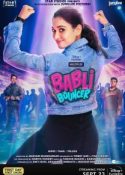 As it celebrates 20 Years, Subhash K Jha revisits the Ketan Mehta directed film which starred Aamir Khan, Amisha Patel, Toby Stephens and Rani Mukerji Mangal Pandey: The Rising.
As it celebrates 20 Years, Subhash K Jha revisits the Ketan Mehta directed film which starred Aamir Khan, Amisha Patel, Toby Stephens and Rani Mukerji Mangal Pandey: The Rising.
In Mangal Pandey the synthesis is sometimes synthetic, sometimes sympathetic, and occasionally pathetic. That feeling of witnessing a wondrous eruption of a slice of history is sliced into compartmentalized kitsch. A. R Rahman’s songs don’t help stem the tides of disappointment. Aamir Khan delivers a ‘polished’ performance. From head to toe, he’s tanned in what looks like a light shade of boot polish to play that marvel from the Freedom Movement Mangal Pandey who, it is rightly believed pioneered India’s long struggle to liberty from Colonial rule.
Often the script’s searing and vicious vagaries get more oppressive than the brutal Gora Log who stand around in costumes that seem to have just been bought off the shelf. Wearing their red uniforms in a display of subverted Nazism, the colonial brigade in Mangal Pandey: The Rising (shouldn’t that have been The Uprising?) is like a drill for a play on uniformed travesty.
There’s no lived-in feeling to the characters specially the white-skinned ones. Cosmetic colonialism was just fine in Manmohan Desai’s Mard where the mighty Bachchan had towered over the sneering Gora Log like a charismatic colossus.
But here??!! We granted Mehta with more subtlety than is obtainable the entire peppery red-and-pastel length and breadth of this patriotic whipped- cream of a yarn.
Frequently the build-up within a sequence is of far more consequence than its culmination and final motivation.
Specially problematic is the Aamir-Rani liaison. The courtship , mimicking the Devdas-Chandramukhi relationship (he flinches when the prostitute tries to touch him) lacks essential verve.
Rani’s character of the prostitute is completely inconsistent with history and with the film’s mood. One minute she’s being auctioned in the market place, much to the disgust of a British woman, the next minute she’s doing a full-on pouty, lip-biting bosom-heaving Mujra in Madame Kirron Kher’s elaborately done-up kotha (a touch of Sanjay Bhansali’s Devdas).
Rather than play the prostitute’s character for poignancy, Rani makes Heera saucy and playful… a kind of Babli of the flesh trade.
Surprisingly Amisha Patel’s briefer cameo as Jwala comes off comparatively well. The sequence where the British officer Gordon followed by Mangal, rescue her from being burnt alive during the barbaric Sati ritual is shot in exquisite tones of white blue orange and sepia. She later has some truly tender moments with her Gora savior .
You wish there was more of the Jwala-Gordon relationship rather than the just mandatory love scene (albeit done aesthetically) where a lone tear rolls off the rescued damsel’s eye.
Appealing visuals do not constitute a powerful narration. Ironically and self defeatingly Gordon comes across as a far more tenable and magnetic character than Mangal Pandey. The conscientious white-man’s colonial dilemma is brilliantly etched by Toby Stephens, an actor we’ve seen little of but would love to see more of in future. This is the first time that a foreigner in a Hindi film gets applause without the audience knowing what he says!
Aamir’s moustache hair and bulging eyes do all the talking and screaming for his historical character. Whether it is a blemish in the script, characterization or the actor, we don’t know. But Mangal Pandey comes across more as a cardboard hero than a true martyr of independence. His climactic hurrah where he’s shown singlehandedly taking on a raging batallion of Britishers is deftly shot, but swiftly shot down by the inconsistent editing.

The scenes written to spotlight Mangal’s heroism are utterly ludicrous. “I AM Hindustan.” Aamir pompously pronounces to the princely gallery of supporters. He sounds like a kid at a toystore playing patriotic games.
Lacking a sense of intrinsic irony and utterly devoid of modesty Aamir’s Mangal Pandey is a surly self important comic-strip super-hero , rendered shadowy and inaccessible by the actor’s inability to connect history with cinematic heroism.
Aamir’s Mangal Pandey is a martyr trapped in a limbo.
Unlike Lagaan (a film to which Mangal Pandey bears absolutely no resemblance except the superficial) where the protagonist often stood in the shadows of the screenplay’s hierarchy to finally emerge the single conqueror of screen space, in Mangal Pandey Aamir never quite gets there. Shadowy, he remains.
There are awesome crowds of immaculately- dressed supporting actors and junior artistes surging forward in a show of nationalist solidarity. Even Rani Mukherjee gets on a horse to participate in the climax (can’t have the distributors complaining about her absence, can we?) They look like spillovers from a cricket match at the end of Lagaan.
What gets your goat is the wince-inducing moments of vulgarity. A peasant operates the hand-held fan for a sleeping British woman with groaning and repeated masturbatory movements… A man auctioning the prostitute Heera offers to pull down her ghagra for better customer satisfaction….Throughout, the cleavage quotient is much too large.
Alas, the narrative lacks true voluptuousness. You appreciate director Ketan Mehta’s strong sense of epic sweep and his remarkable joy in arranging characters in a seemingly spontaneous spatial harmony . Nitin Chandrakant Desai’s art work and Himman Dhamija’s cinematography add to the film’s look of poised extravagance. But they don’t signify the special blend of the epic and epicurean which sets historical text into an inviting cinematic context.
Faroukh Dhondy’s script is more kitschy Bollywood than an actual chronicle of history. And that amazing director Ketan Mehta is hellbent on eradicating the image of an avante garde by designing that opulent oddity known as The Big Bollywood Extravaganza.
End-result? A film that’s more hysterical than historical, more corny than captivating. There is no dearth of brilliant cinema in Mehta’s film—no mistake about that. But if you’re looking for the director’s incredible flair for blending socio-political comment with colour and spice than go for Mehta’s Mirch Masala or Bhavni Bhavai . There , folklore met a feisty flavourful narrative in a sweeping synthesis .
Ranu Mukerji was very proud to be associated with is project. In an interview after the film’s release, the actress spoke to Subhash K Jha. “Agreed my role is limited. But Mangal Pandey is a prestigious product. It’s also my fourth period film, after Kamal Haasan’s Hey! Ram, Sanjay Leela Bhansali’s Black and Amol Palekar’s Paheli. Actually, the difference between a period and contemporary film is created by the clothes. Otherwise, the emotions and drama are the same. In Hey! Ram and now Mangal Pandey: The Rising, the period detailing is excellent. Since Mangal is set in 1857 you’ll only see people riding horses and elephants.”
Adding, “See, my role started as a cameo. I was supposed to play the widow Jwala’s character — yes, the one Aishwarya Rai was supposed to have done. Now Amisha Patel is doing that. When I read the script, I fell in love with the small role of the prostitute. There were two or three very good scenes. The script underwent a change, and I got more space than before. But it’s still a cameo — nothing like what Smita Patil did with Ketan Mehta in Mirch Masala, though I wish had. Though I play a tawaif, I don’t have a central role like Meena Kumari in Pakeezah or Rekha in Umrao Jaan. Mangal Pandey is completely about the title character. I got a chance not only to do a mujra but also to be choreographed by Saroj Khanji. It’s a situation where I taunt the goras. Actually, I’m a trained classical dancer. One day, I hope to do a film where I play a dancer. Maybe someday someone will make Guide, Kinara or Bhairavi with me.
Speaking about Aamir Khan she said, “Aamir was my hero in Ghulam. After that there was a long gap until Mangal Pandey. In between he did want me for Lagaan. Today, we’re very close friends. The equation is different. I remembered how he used to show me to do scenes. He still tells me how to do my scenes. I admit I did Mangal Pandey for Aamir. I can never say no to Aamir or Shah Rukh.”
As for the director, the actress shared in closing, “Ketan Mehta is a fine filmmaker. It’s important for me to be comfortable with the person I work with. Ketan was really easygoing and helpful. When you do something different, there’s always a risk factor involved. But to me, everything I do with Shah Rukh is special. And the way Ravi Chandran shot me in Paheli was unbelievable. I’ve been shot beautifully in Mangal Pandey. But here, my makeup is completely true to the period. Those days women put charcoal instead of kajal in their eyes. I created that effect by smudging kajal.”










